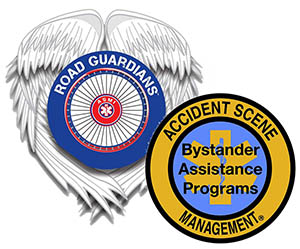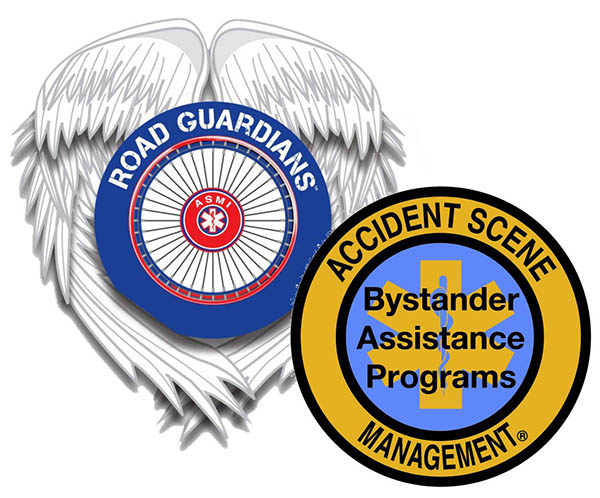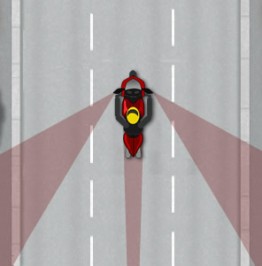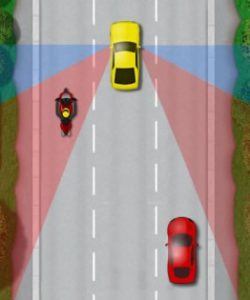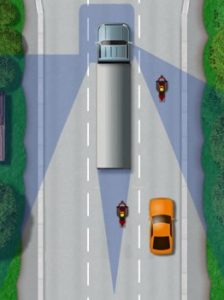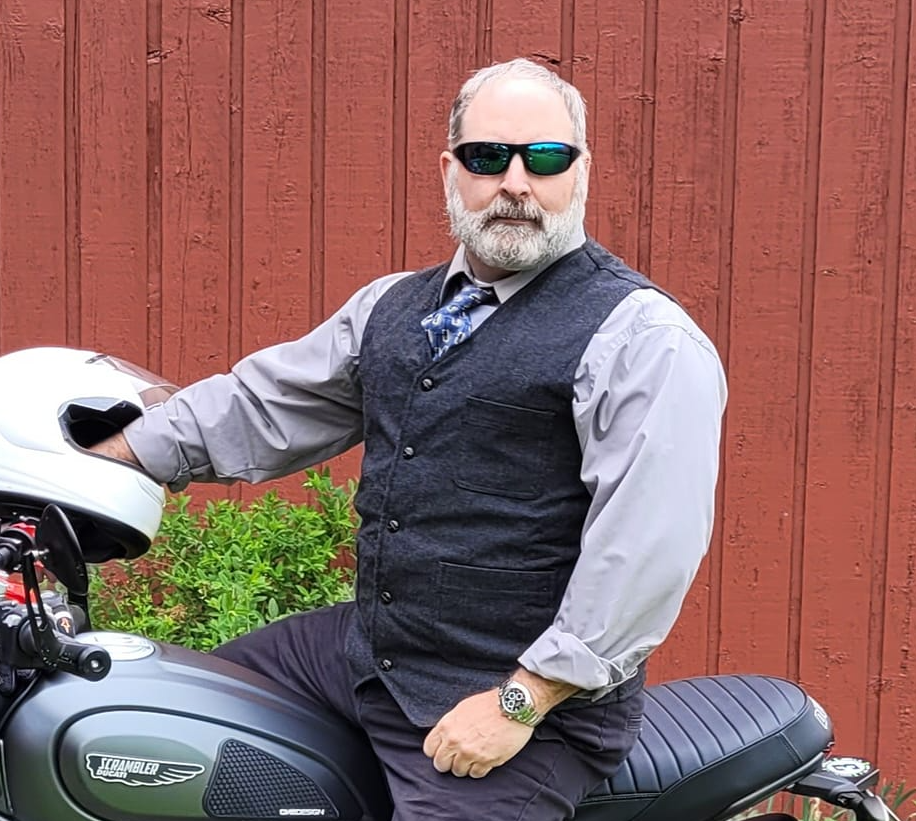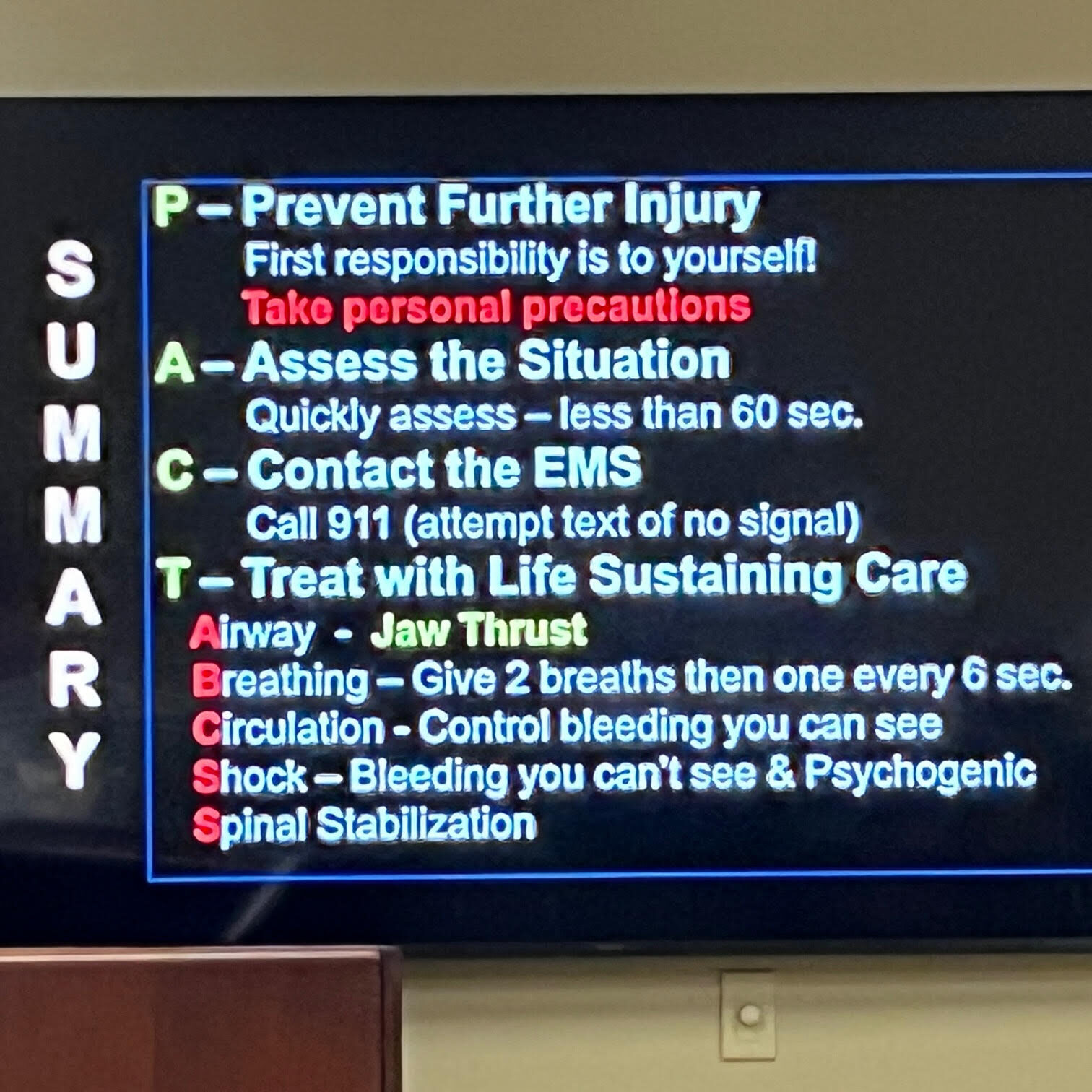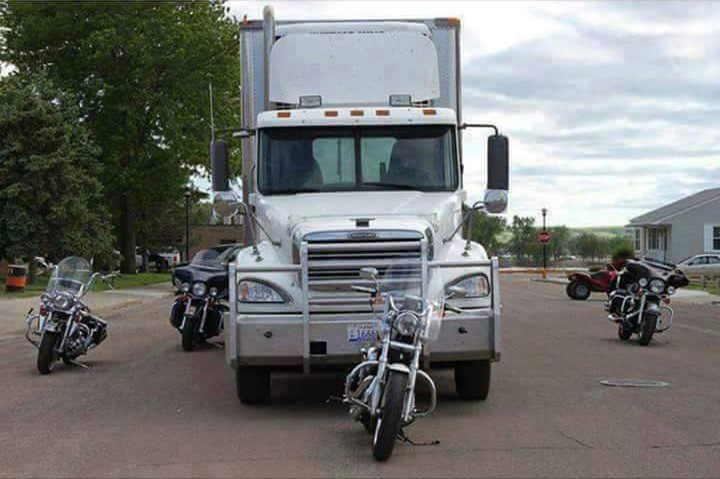

Motorcycles and Blind Spots
As a motorcyclist you are vulnerable and need to take into consideration your own blind spots as well as that of others.
All vehicles that you share the road with have blind spots. Regarding vehicles a blind spot is an area that cannot be seen in a vehicles mirrors. The size and location of the blind spots depend on the vehicle, though it is safe to say the larger the vehicle, the larger the blind spots. For every vehicle blind spots occur on each side of the vehicle. For larger vehicles, such as a semi trucks or moving trucks, often the rear is affected too. When a vehicle is entering an area that is not covered by mirrors the motorist is supposed to check their relevant blind spot before carrying out their maneuver, however not everyone on the road does. It is good practice when you are riding a motorcycle to assume they won’t. Attending to other people’s blind spots is as important as attending to your own. You know you are going to look… what you don’t know is if THEY are going to look.
A lack of blind spot checks accounts for many of all motor vehicle accidents, but the affects to a motorcyclist can be particularly devastating as we are not protected like other motorists.
Where Are A Motorcycle’s Blind Spots?
So where are motorcycle blind spots? They are indicated in this picture in red.
The blind spots on a motorcycle will vary depending on the motorcycle and the type of mirrors used. Some motorcyclists may have blind spot mirrors fitted to aid in reducing the blind area. In general though most motorcycles will have blind spots to the sides and rear as indicated by the red shaded areas in picture above.
A combination of mirror checks and blind spot check should always be performed so you know exactly what’s going on behind you. Check blind spots not only for your own safety, but for other road users before you signal or change direction.
Checking the blind spot requires looking behind, which in itself is hazardous as you’re not looking where you’re going. There are occasions when looking behind may be too hazardous. Whilst riding at high speed to overtake or when riding close to a vehicle in front for example.
Looking behind to check the blind areas is often referred to as the “lifesaver glance” due to the importance of this simple check. Use judgement to decide when to check blind spots, though in general they must be checked when:
- moving off from a stationary position
- making left or right turns
- making lane changes
- overtaking
- slowing down
- stopping
Blind Spots of Other Vehicles
Every motorist should take into account the blind spots of other vehicles, motorcyclists more due to the lack of protection.
As a motorcyclist ideally you don’t want to be riding in other vehicles blind spots as you have no idea what intentions the driver has and if they check their blind spots. This is obviously unavoidable in some situations, but if you have the opportunity to move out from a vehicles blind area, then do so!
A car’s blind spot varies like other vehicles due to make,model and type of mirrors used. If we look at the picture above with the yellow car, the red shaded area indicates the most dangerous area to travel in. Blind spots within the red zone, the driver will not see anything unless they physically look rearwards to check.
Larger vehicles will generally be affected with larger blind spots. The blue shaded areas signify areas where a semi truck cannot see in their mirrors or cannot see due to the bulk of the vehicle.
Generally speaking, if you cannot see the driver, chances are they cannot see you either. Which can be hazardous if the driver intends to make a maneuver or change lanes. It is a good idea to keep a good distance from all vehicles if possible, especially larger ones where the driver is less likely to see you.
Blind Spots in the Human Vision
Ever heard the saying look TWICE… save a life? In our vision there is a small portion of the visual field of each eye where there are no photoreceptors (i.e., rods or cones) in the optic disk, and, therefore, there is no image detection in this area. A driver can look, and completely NOT SEE a motorcycle if it lands in this part of the driver’s peripheral vision. This is often why we hear “I didn’t even see him”.
Now that you are educated on blind spots and why/how to avoid them… it is important to remember to always be a vigilant and defensive driver (especially when riding a motorcycle). You cannot control how other motorists on the road will maneuver, but you CAN be expecting it and keep yourself out of harms way.
